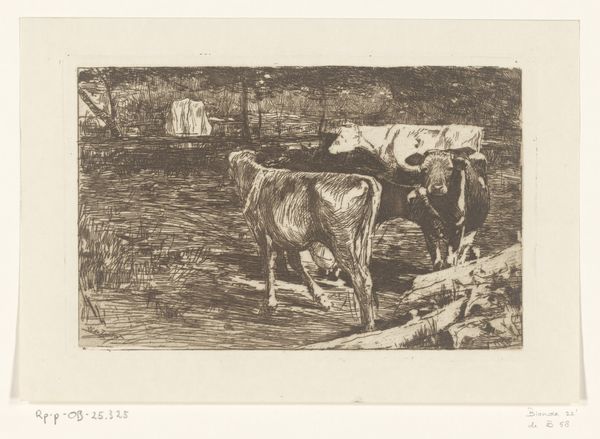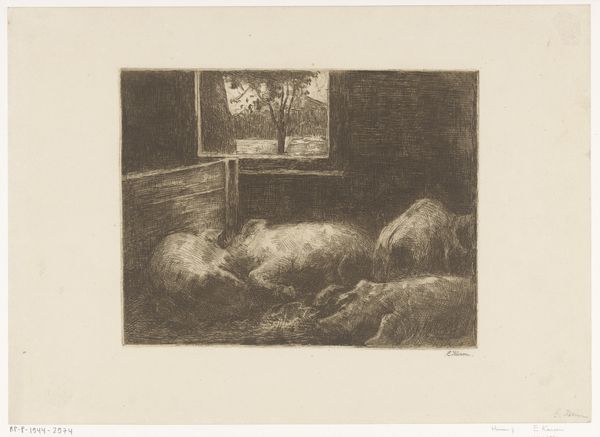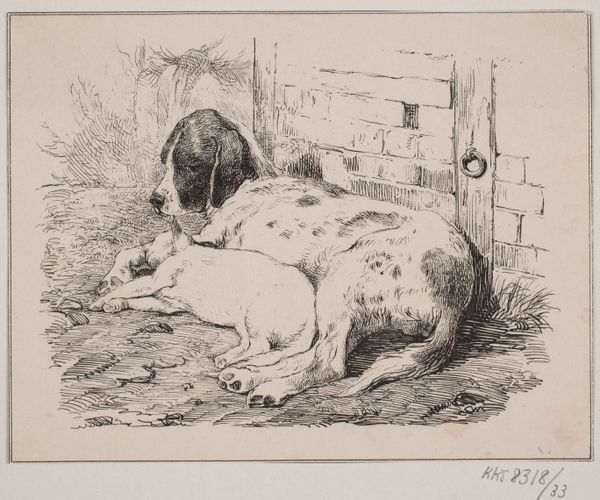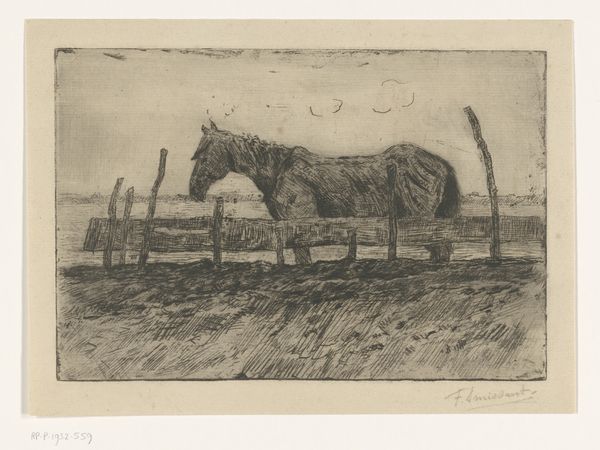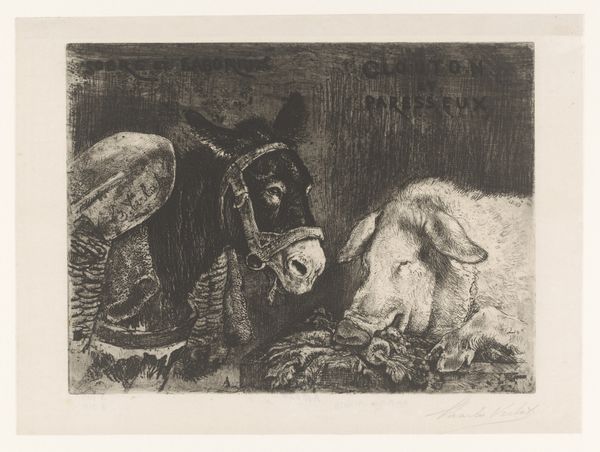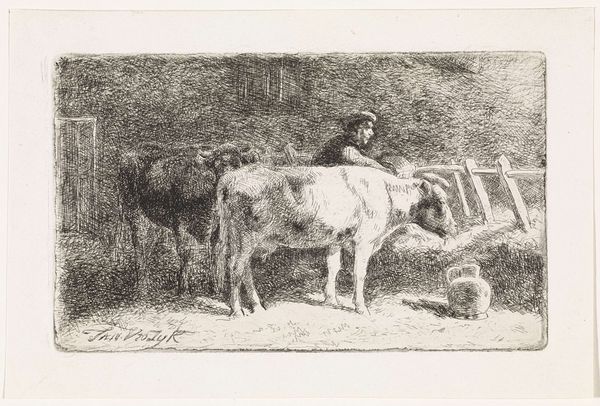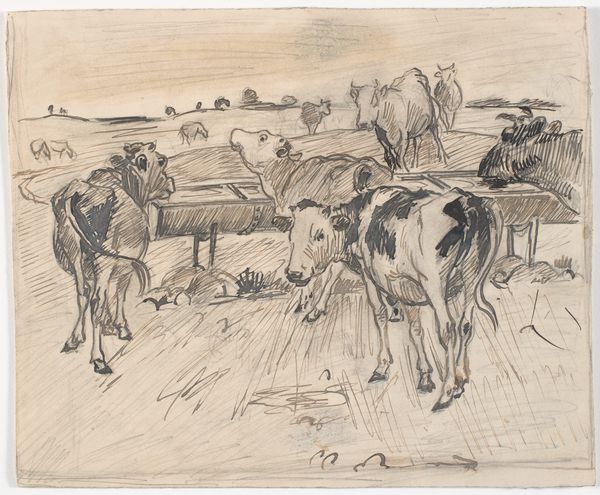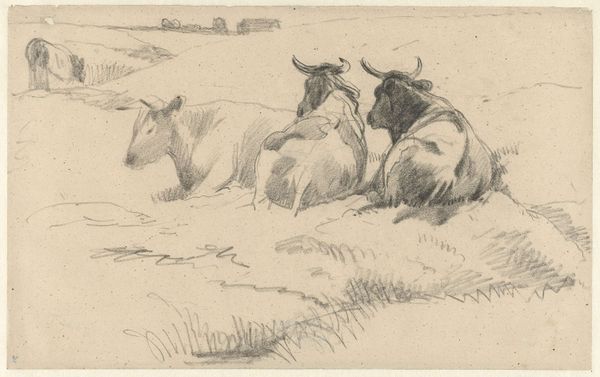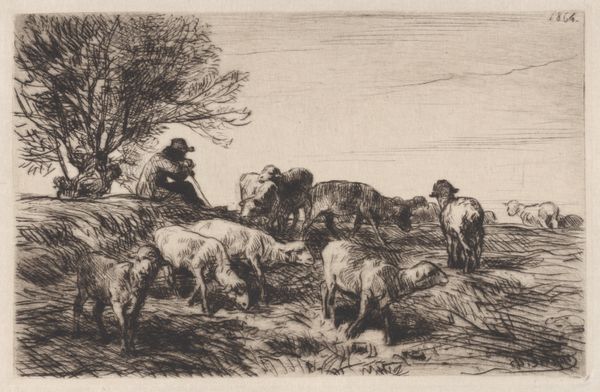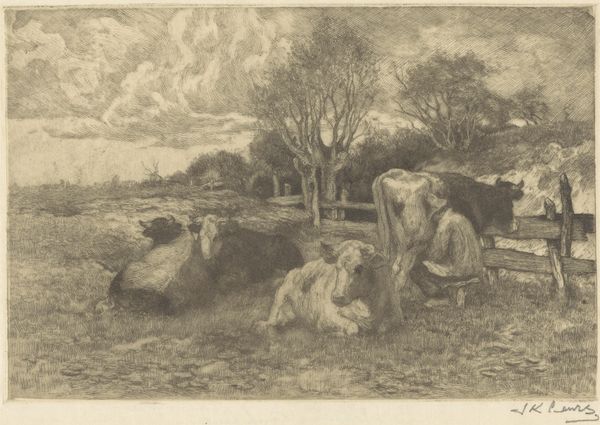
drawing, print, etching
#
drawing
# print
#
etching
#
landscape
#
genre-painting
#
realism
Dimensions: Sheet: 9 13/16 × 13 1/4 in. (25 × 33.7 cm) Plate: 7 in. × 9 3/8 in. (17.8 × 23.8 cm)
Copyright: Public Domain
Curator: Félix Bracquemond's "Moutons parqués," which roughly translates to "Sheep in a Pen," dating from 1856-1858. It's currently held at the Metropolitan Museum of Art. The medium here is etching, offering a remarkably detailed snapshot of rural life. Editor: My initial impression is one of tranquility tinged with constraint. The stark, monochromatic palette emphasizes the stark geometry of the wooden enclosure, creating a visual tension. The texture! So many tiny lines evoke rough-hewn wood, thick wool, and scruffy grass. Curator: Exactly. Bracquemond, aligning with the Realist movement, turns his attention to everyday scenes, elevating the ordinary through close observation and technical skill. Notice how the etching technique, with its intricate network of lines, mimics the tangled textures of the scene. Editor: And there is the very interesting inclusion of that slumped dog there, seemingly both relaxed and alert, as are those cute little lambs on the other side. It immediately begs questions about the relationship between nature and domesticity during the 19th century. The rifle adds a layer of quiet preparedness. Curator: Certainly. This piece reflects the social landscape of the era, showing the rural life and France's shifting relationship with its agricultural roots in the mid-19th century. It also gives hints to that moment where modernism would influence even landscape works, creating a dialogue between pure aesthetic form and narrative context. Editor: True. It becomes a visual index, charting both the physical attributes and implicit power dynamics of a particular time and place. But aesthetically, I keep returning to the contrast of textures: smooth wool against jagged wood, creating an undeniable visual friction that captures a precise, if unromanticized, picture of country living. Curator: Indeed. The composition reinforces this, drawing our eyes toward both the confined sheep and the ever-vigilant shepherd's dog. Bracquemond prompts us to look beyond the bucolic and acknowledge the often overlooked realities. Editor: Overall, what resonates is its honesty—Bracquemond rejects idealized romanticism in favor of revealing what is there in plain sight. Curator: Bracquemond's piece captures an enduring and subtle portrait, not only in the image presented but by acknowledging the very construction of the era and society, and showing its importance to artistic expression.
Comments
No comments
Be the first to comment and join the conversation on the ultimate creative platform.

